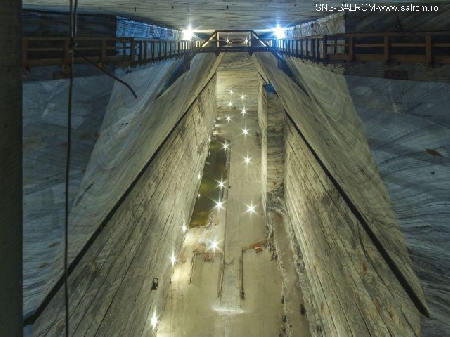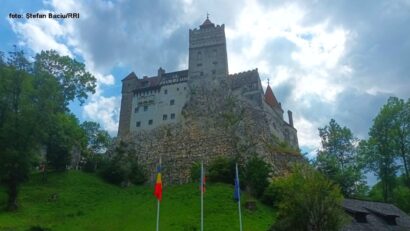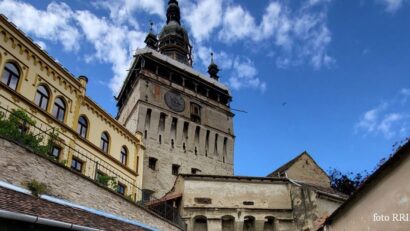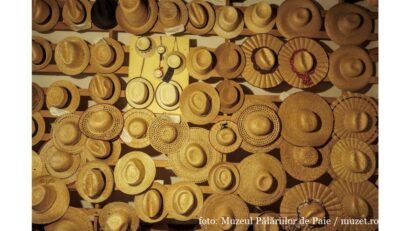“Romania’s Salt Mine Spas” Contest, At the End
We invite you to join us on a trip to the Romanian salt mines, equipped with modern entertainment facilities, providing guests with excellent opportunities to relax, exercise and treat their respiratory diseases.

Daniel Onea, 28.02.2013, 15:34
Without salt, food would be tasteless and the chemical industry would have not been what it is today. Romania’s salt extraction area is huge, which makes the country one of the biggest salt producers in the world. Experts say that at present Romania can secure its salt production for the next 1,000 years from domestic resources alone.
Whether we talk about Ocna Sibiului, Turda, Praid, Targu Ocna, Slanic Moldova or any other tourist salt mine in Romania, they all provide excellent treatment and spa centres for tourists. The curative properties of salty air have led to the development of speleotherapy and climatotherapy, the treatment of conditions underground, in caves and salt mines. This form of treatment consists mainly in the inhalation of air, in salt mines, and is used to cure respiratory ailments such as asthma, bronchitis and allergies.
Not to mention that the former salt mines have excellent acoustics, which makes them ideal venues for concerts. This is also the case of the Slanic Prahova salt mine spa that we are going to visit today. Constantin Niculescu, in charge with salt exploitation at the Unirea tourist salt mine, tells us more about it:
“The first written evidence about an important salt exploitation dates back to 1685, when sword bearer Mihai Cantacuzino bought an estate that covered most of today’s town, with the intention to capitalize on its salt deposits. In 1865 he opened the first salt mine, which, in technical terms, included a surface opening with four vertical pits: two for the extraction of the bulk salt from the underground deposits, one for ventilation and another one for the miners’ transport. There is a constant temperature of 12 degrees Celsius inside the Unirea salt mine, irrespective of season. The air pressure is by 20 millimetres mercury column unit higher than at the surface. This particularity led to the development, as of 1970 when the salt mine was closed, of the mine’s potential as a tourist and treatment centre. Respiratory diseases such as asthma, bronchitis and bronchiolitis are some of the health conditions that can be treated here.”
Slanic Prahova, where Europe’s biggest salt mine is located, is a treatment and spa centre where the Salt Mountain, unique in the world, can be found. You will also discover a town surrounded by scenic landscapes, in short, the perfect place for a holiday. Constantin Niculescu, in charge with salt exploitation at the Unirea tourist salt mine in Slanic Prahova, tells us why tourists return here every time:
“First of all, the quality of air in this underground facility and the impressive aspect of the mine make this tourist site truly attractive. We have also promoted the place in the international media, and as a result we have visitors coming from all over the world: America, Asia, Israel, the Middle East and Europe. Shuttles bring here tourists from the Middle East almost every day. People are interested in this site, and there are travel agencies that offer packages including transport, accommodation and tours of this mine, which is open throughout the year.”
The town of Slanic is located close to the Teleajan Mountains, which you can reach on several trails for 3 to 5-hour hikes. An alternative would be a 30-minute walk to one of the natural springs with sulphated or chlorosodic waters, near the town. Then, only 39-km away, there is the city of Ploiesti with its National Oil Museum.
Gabriela Tanasescu, the director of this museum: “Romania became a landmark in the history of oil processing as far back as 1857, when three major things happened. That year, Romania became the first country in the world with a crude oil output included in international statistics. Next to Ploiesti, the world’s first industrial oil refinery was set up that year, and Bucharest was the first city in the world to use oil lamps for street lighting, on April 1, 1857.”
And once you get to Ploiesti, there is another interesting visit you can try. Tatiana Ristea, a curator with the Nicolae Simache Clock Museum in Ploiesti, tells us what it is: “In our museum you will be able to see some of the oldest types of watches and clocks, from sundials to water clocks and to the modern timepieces that we all know. We have an impressive collection of pocket watches, mantel clocks, and a large variety of music boxes that make a separate category of items on display in our museum.”






























